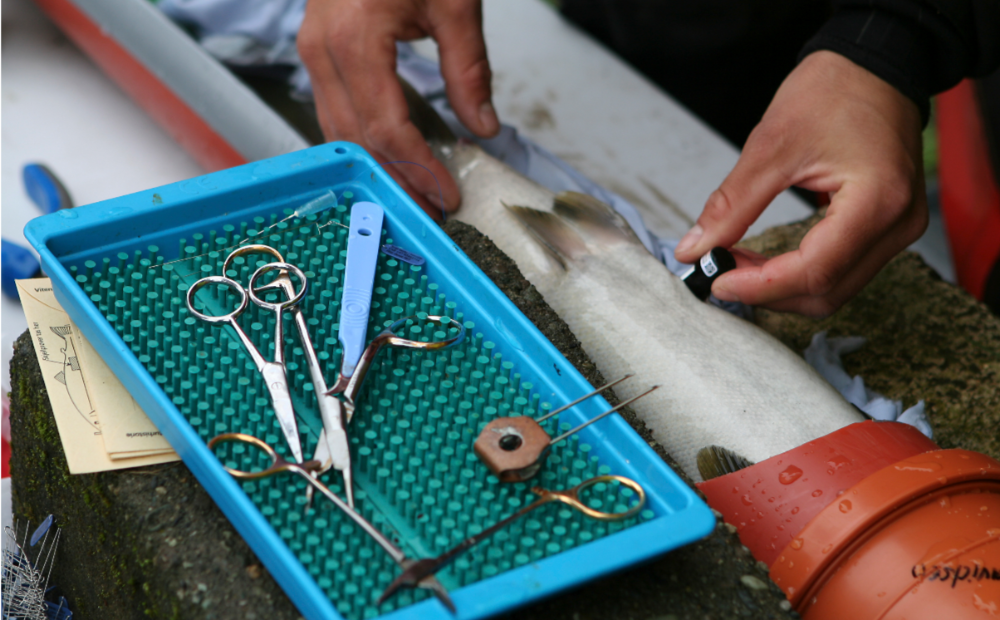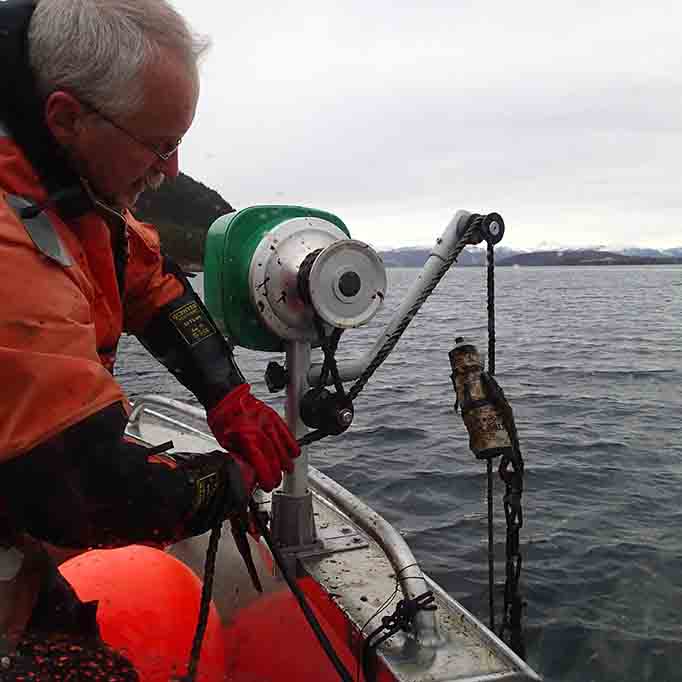The secret life of Sea Trout
The secret life of Sea Trout
The brown trout Salmo trutta is a dominant component of both the anadromous and stationary fish fauna in Norwegian watercourses, and of great cultural and socioeconomic importance for subsistence and recreational angling.However, during the last decades, the abundance of anadromous brown trout (often termed sea trout) has declined markedly in many regions.

As an example, the catches in Norwegian rivers have, except for the northernmost areas, declined by 23–66% during the last two decades. Recent findings from several other countries where the species occurs indicates similar decreases, and it is hypothesized that this results from decreased sea survival caused by changes in food supply or increasing infection by parasites. By contrast, there have not been declines in numbers of non-migratory brown trout in these same regions.
Consequently, the NTNU University Museum has seen 2011 studied migratory behaviour, habitat use, feeding ecology and growth in the marine environment. Such information is important in order to evaluate if dynamic environmental changes may confine the marine feeding migration.
By use of methods such as acoustic telemetry and passive integrated transponder (PIT) tags individual fish are followed in the marine and freshwater environment for several years. Analyses of scales, stomach content, marine parasites and stable isotopic ratios are further used to bring information about marine growth rates and feeding.
Several of our projects are conducted in cooperation with e.g. Norwegian Institute for Nature research, Dalhousie University/Ocean Tracking Network (Canada), Technical University of Denmark, UiT the Arctic University of Norway, Institut national de la recherche agronomique and the French Polar Institute.
Subprojects
CHASES - Consequences of land-use change and human activity on anadromous salmonids and the ecosystem services that they provide (2016-2020)
Brown trout may live the entire life in freshwater (resident trout) or occasionally migrate to sea (sea trout). In theory, individuals should migrate to sea if such behavior increases reproductive success. It has been shown, that migratory differences not only rely to resident or migratory individuals. Within a seaward migrating group of trout, large differences in distance migrated away from the river can often be found. Some stay close, while other migrates far away.
In this project, we will aim to map physiologically differences between juvenile trout that become residents or migrate to sea and between short and long distance migratory sea trout. Seaward migration is a behavior that can be expected when the gain for the individual fish is higher than the cost. Consequently, one can expect that this behavior will be changed or disappear if sea conditions are so negative for sea trout that it loses reproductive potential by migrating to sea.
By analyzing 30-40 years old sea trout scales from areas with and without establishments of aquaculture and compare the findings with scale materials from the last 1-5 years, it can be investigated if growth rates and the duration of marine residence has decreased after the aquaculture activities were introduced to the area. Sea trout is an important ecosystem service in many areas. The species is important for recreation and in some areas, for tourism.
As a part of the project, the value of sea trout as an ecosystem service will be assessed and it will be evaluated if possible negative changes in growth, duration of seaward migration or the marine migratory behavior will decrease that value.
Project Status: Active
Publications
Scholarly publications
- Nutritional correlates of spatiotemporal variations in the marine habitat use of brown trout (Salmo trutta) veteran migrants
- Marine migration and habitat use of anadromous brown trout Salmo trutta
- Riverine and near coastal migration performance of hatchery brown trout Salmo trutta
- Does reduced feeding prior to release improve the marine migration of hatchery brown trout Salmo truttasmolts?
- Can sea trout Salmo trutta compromise successful eradication of Gyrodactylus salaris by hiding from CFT Legumin (rotenone) treatments?
Technical reports
(In Norwegian only, with English summary)
- Marine vandringer og områdebruk hos sjøørret og sjørøye i Tosenfjorden (Naturhistorisk rapport 2018-8)
- Habitatbruk og vandringer til sjøørret i Hemnfjorden og Snillfjorden (Naturhistorisk rapport 2014-6)
- Gir redusert fôrmengde bedre vandringsvillighet hos klekkeriprodusert ørretsmolt (Naturhistorisk rapport 2014-1)
News Media
- Join our master students when they recover acoustic receivers (YouTube-Video)
- Join our master students when they tag Arctic charr (YouTube-Video)
- The secret life of the sea trout (Article in Gemini 30.06.2014)
- The secret life of sea trout (YouTube-video)
Relevant master thesis
- Migration and habitat use of sea trout post-smolts Salmo trutta in a Norwegian fjord system (Anne Cathrine Flaten, mai 2015)
